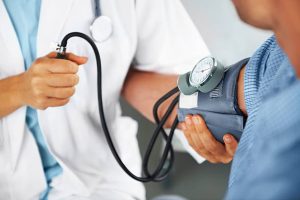Physical Address
Elastography is a medical imaging technique that is used to assess the condition of tissues in the body. It provides a score or a measure of the stiffness or elasticity of tissues, which can help doctors in diagnosing various diseases.
Elastography works by using special ultrasound probes or devices that emit high-frequency sound waves into the body. These waves are then reflected back to the probe, and the device measures the speed at which the waves travel through the tissue. This information is then used to create a visual representation of the tissue stiffness, which can be seen on a computer screen.
Elastography is particularly useful in assessing the stiffness of organs such as the liver, where diseases like cirrhosis can cause significant damage and alter the normal stiffness of the tissue. With elastography, doctors can accurately assess the stiffness of the liver and provide early detection of diseases before they show any symptoms.
Elastography is a non-invasive and fast technique that does not require any special care or preparation before the test. It is a safe alternative to invasive procedures like liver biopsy, which carry a small chance of complications. Elastography can help improve patient care by providing doctors with valuable information about tissue stiffness and the presence of any fluid or abnormality.
What is it used for
Elastography is a small medical imaging technique that is used to test the stiffness of tissues in your body. It uses sound waves to create images of the tissue and can be done using a handheld device or a machine. Elastography is often used in conjunction with other imaging tests, such as ultrasound or MRI, to provide more information about the tissues being tested.
One of the main uses of elastography is to assess the stiffness of tissues in order to determine the presence of diseases or conditions. For example, elastography can help determine if there is liver damage caused by conditions like cirrhosis or hepatitis. It can also be used to assess the stiffness of breast tissue, which can help in the detection of breast cancer.
Elastography can also be used to improve the accuracy of biopsies. By using elastography before a biopsy, doctors can identify areas of the tissue that are more likely to be cancerous. This can improve the chances of getting a correct diagnosis and reduce the need for additional tests.
In addition to its use in diagnosing diseases, elastography can also be used to monitor the progress of treatment. By measuring the stiffness of tissues over time, doctors can see if the treatment is working and make adjustments if necessary.
There are different types of elastography, such as strain elastography and shear wave elastography. Strain elastography measures the deformation of tissues when a force is applied and can show areas of abnormal stiffness. Shear wave elastography uses a focused ultrasound beam to generate shear waves in tissue, and the speed of these waves is used to calculate tissue stiffness.
Elastography is a fast and non-invasive procedure that does not require any special preparation. However, it is important to follow any instructions given by your healthcare provider before the test, such as fasting or avoiding certain medications.
Overall, elastography is a valuable tool in the field of medical imaging. It can provide important information about the stiffness of tissues in the body, helping doctors to diagnose and monitor a range of diseases and conditions.
Why do I need an elastography test
Elastography is a medical imaging technique that measures the stiffness of tissues using a special device called an elastography machine. This test is important because it provides valuable information about the condition of your organs and can help in the diagnosis of various diseases.
When it comes to diagnosing diseases, traditional imaging tests like ultrasound or MRI can only show the structure and size of organs. However, they cannot provide information about tissue stiffness. Elastography, on the other hand, can measure the elasticity or stiffness of tissues, which can be an indication of certain diseases.
What is tissue stiffness?
Tissue stiffness refers to how rigid or flexible a particular tissue is. Healthy tissues have a certain level of stiffness that is considered normal. However, when there is an underlying condition or disease, the stiffness of tissues may change. For example, in liver cirrhosis, the liver becomes increasingly stiff due to fibrosis.
Elastography tests use different types of waves, such as ultrasound waves or radio waves, to assess tissue stiffness. These waves are sent into the body and the machine measures how fast they travel through the tissues. The faster the waves travel, the stiffer the tissue.
Why is tissue stiffness important?
Tissue stiffness can provide valuable information about various diseases. For example, in liver diseases like cirrhosis or hepatitis, increased tissue stiffness is a sign of liver damage. Elastography can help in detecting these conditions before they cause significant harm to the liver.
Elastography can also be used to assess the stiffness of other organs such as the breast, prostate, or thyroid. By evaluating tissue stiffness, doctors may be able to determine the presence of abnormal growths or tumors.
Additionally, elastography can be used to monitor ongoing treatment and assess the effectiveness of interventions. For example, in cancer treatment, elastography can help determine if a tumor is responding to therapy or if it is growing.
Overall, having an elastography test can provide important insights into the health of your organs and help your healthcare provider make more accurate diagnoses and treatment plans. By detecting tissue stiffness early on, there is a better chance of preventing further damage and managing conditions effectively.
What happens during an elastography test
Elastography is a type of diagnostic test used to evaluate the stiffness or elasticity of tissues in the body. It is often done before or alongside other imaging tests, such as ultrasound or MRI, to provide additional information about the condition of the tissues.
How does elastography work?
Elastography uses waves, such as ultrasound waves, to generate images that show the stiffness of the tissues. During the test, a healthcare provider will use a special device, called a transducer, to send high-frequency sound waves into the body part being examined. These sound waves cause tissue to vibrate, and the computer in the imaging machine measures the speed and pattern of these vibrations.
What does elastography show?
The elastography test shows the relative stiffness of tissues compared to the surrounding areas. Stiffer tissues may indicate the presence of certain diseases or conditions. For example, in liver elastography, increased stiffness may be a sign of liver fibrosis or cirrhosis.
By getting this information, healthcare providers can better evaluate the stage of the disease, monitor treatment progress, and improve patient care. Elastography can also help assess the likelihood of liver damage caused by hepatitis C, guide biopsies to target areas of concern, and detect small liver tumors.
It’s important to note that elastography is a fast and non-invasive test and does not carry the same risks as more invasive procedures like biopsies.
During the elastography test, you will typically lie on a table in a comfortable position. The healthcare provider will apply a small amount of gel to the area being tested to promote good contact between the device and your skin. The device will then be placed on your skin and moved around to obtain the necessary images.
After the test, you can usually resume your normal activities without any special care. The results of the elastography test will be analyzed by a healthcare provider, who will discuss the findings with you and determine the appropriate next steps, if needed.
Will I need to do anything to prepare for the test
Before having an elastography test, there are a few things you should know. Unlike other imaging tests such as an X-ray or a CT scan, elastography doesn’t involve radiation. So you don’t need to worry about any exposure to harmful radio waves.
When it comes to preparation, there’s usually no need to do anything special. You can eat and drink as usual, and there’s no requirement to fast before the test.
However, there are certain factors that may affect the test results. For example, any type of internal fluid or damage to the area being tested can alter the stiffness measurements. So it’s important to inform your healthcare provider about any conditions or injuries you have that might impact the accuracy of the test.
In some cases, your healthcare provider might recommend a transient elastography test. This type of elastography shows the stiffness of a small portion of the liver. To get the best results, you may need to avoid eating or drinking anything for a few hours before the test.
During the test, a device called a transducer is placed on the skin over the area of interest. The transducer emits sound waves into the body, which then bounce back and are detected by the same device. A computer calculates the stiffness score based on the speed of these waves. Depending on the specific device and the area being tested, the procedure may take anywhere from a few minutes to around 30 minutes.
It’s important to note that elastography can be used to assess various conditions, such as liver fibrosis or breast abnormalities. The test results can provide valuable information about the presence and severity of certain diseases. However, elastography is not a definitive diagnostic tool and should be used in conjunction with other tests and clinical judgment.
If you have any concerns or questions about the elastography test, make sure to discuss them with your healthcare provider. They will be able to provide the right guidance and ensure you’re well taken care of throughout the entire process.
In summary, when it comes to preparing for an elastography test:
- No special preparation is usually necessary, and you can eat and drink normally.
- Inform your healthcare provider about any conditions or injuries that may affect the test results.
- Be aware of any specific instructions for transient elastography, which may require fasting before the test.
- Understand that the test involves the use of a device that emits sound waves and a computer to calculate stiffness scores.
- Know that elastography provides valuable information but should be used alongside other tests for a comprehensive assessment.
- Discuss any concerns or questions with your healthcare provider to ensure you receive the appropriate care.
Are there any risks to the test?
When it comes to elastography, there are typically no risks involved. The test is considered safe and non-invasive, meaning it does not involve any incisions or injections. It is a low-risk procedure that does not cause any pain or discomfort for the patient.
However, there are a few things to consider before having an elastography test. For instance, some patients may feel a slight discomfort when the ultrasound probe applies pressure to the area being tested. This is usually transient and only lasts for a short period of time.
It’s important to let the healthcare provider know if you have any allergies or sensitivities to latex or the gel used during the test. Additionally, if you are pregnant or have any underlying medical conditions, it’s important to discuss with your healthcare provider to ensure the test is right for you.
While elastography is generally safe, there is a small chance of damage to the tissue being tested. This is extremely rare and usually only occurs if there is a pre-existing condition or if the test is performed incorrectly. In skilled hands, the test should not cause any harm or damage.
It’s also worth noting that elastography is a relatively fast procedure, typically taking around 15-30 minutes to complete. The results are almost instant, with the computer displaying a color-coded map that shows the stiffness of the tissue being examined.
Elastography can be a useful tool for assessing the stiffness of tissue and detecting certain diseases, such as liver fibrosis or cancer. By using ultrasound waves or radio waves, elastography can provide information about the tissue’s elasticity, which can be an indicator of certain conditions or diseases.
Overall, elastography is a safe and effective test that can provide valuable information about the stiffness of tissue. While there are no major risks associated with the test, it’s always important to discuss any concerns or questions with your healthcare provider before having the test performed.
What do the results mean
When you have an elastography test, you will get a score that shows the stiffness of the tissue being measured. This score can help your healthcare provider determine if there is any abnormality or damage present.
Before the test, it is important to let your healthcare provider know about any medications you are taking or any medical conditions you have. This will help ensure that the test results are accurate.
If the elastography test shows a higher score than normal, it may indicate an increase in tissue stiffness. This could be a sign of diseases such as liver cirrhosis or fibrosis. On the other hand, a lower score than normal may indicate a decrease in tissue stiffness, which can be seen in conditions like fatty liver disease.
It is important to note that elastography is a transient test, meaning it measures the stiffness in real-time. This means that the results can vary depending on factors such as hydration levels and recent physical activity.
Elastography uses small waves, either mechanical or generated by a computer or a device called a transducer, to assess tissue stiffness. These waves are similar to the ones used in diagnostic ultrasound.
Overall, the elastography test can provide valuable information about the condition of your tissues. It can help identify diseases and monitor their progression over time. However, it is important to remember that elastography is just one tool in the diagnostic process, and other tests may be needed to confirm a diagnosis.
Is there anything else I need to know about an elastography?
Elastography is a medical imaging technique used to assess tissue stiffness, providing valuable information for diagnosing various diseases. There are a few key points to keep in mind when considering an elastography examination.
What does the elastography score mean?
During an elastography examination, a computer analyzes the elasticity of the tissues and assigns a numerical score. This score reflects the relative stiffness or softness of the tissue being examined. Higher scores indicate stiffer tissue, while lower scores indicate softer tissue. The elastography score can help in determining the presence and severity of underlying diseases or conditions.
How are the elastography tests performed?
There are different types of elastography devices and techniques available. The most common method involves using an ultrasound device with a special probe. The probe emits low-frequency sound waves that travel through the tissue. The device then measures the speed of these waves as they pass through the tissue, providing an assessment of its stiffness.
Another type of elastography called transient elastography uses a device called a FibroScan. This device uses ultrasound waves to measure the stiffness of the liver, providing information about liver health.
What should I know before the test?
Before undergoing an elastography examination, it is important to follow any specific instructions given by your healthcare provider. This may include fasting for a certain period of time or avoiding certain medications. It is also helpful to inform your healthcare provider about any existing medical conditions or allergies.
During the examination, you should lie still and breathe normally to ensure accurate results. The procedure is usually painless and non-invasive, but each individual’s experience may vary.
Are there any risks or side effects?
Elastography is generally safe and has minimal risks associated with it. The examination does not involve any radiation exposure and is generally considered non-invasive. There is a small chance of transient discomfort during the procedure, often caused by the pressure exerted by the probe on the skin.
If you have a known liver condition, there is a small risk of transient liver damage. However, this risk is extremely rare and usually occurs in individuals with severe liver disease.
What can elastography show?
Elastography can provide valuable information about the condition of various tissues in the body. It is most commonly used to assess liver stiffness, which can indicate the presence of liver fibrosis or cirrhosis. Elastography can also be used to evaluate the stiffness of other organs, such as the breast, prostate, or thyroid.
In addition to assessing the stiffness of tissues, elastography can also be used to visualize fluid-filled areas, such as cysts or abscesses. This can help in the diagnosis and management of certain diseases.
How can elastography improve healthcare?
Elastography offers a non-invasive and reliable method for assessing tissue stiffness, providing valuable information for diagnosis and monitoring of various diseases. By accurately measuring tissue elasticity, elastography can help healthcare professionals make more informed decisions about treatment options, disease progression, and response to therapy.
The use of elastography has the potential to reduce the need for invasive procedures, such as biopsies, in some cases. This can lead to improved patient care, reduced healthcare costs, and better overall management of diseases.
In conclusion, elastography is a valuable imaging tool that can provide important information about tissue stiffness and the presence of certain diseases. It is a safe and non-invasive procedure that can improve healthcare by offering a more accurate assessment of tissue condition.









